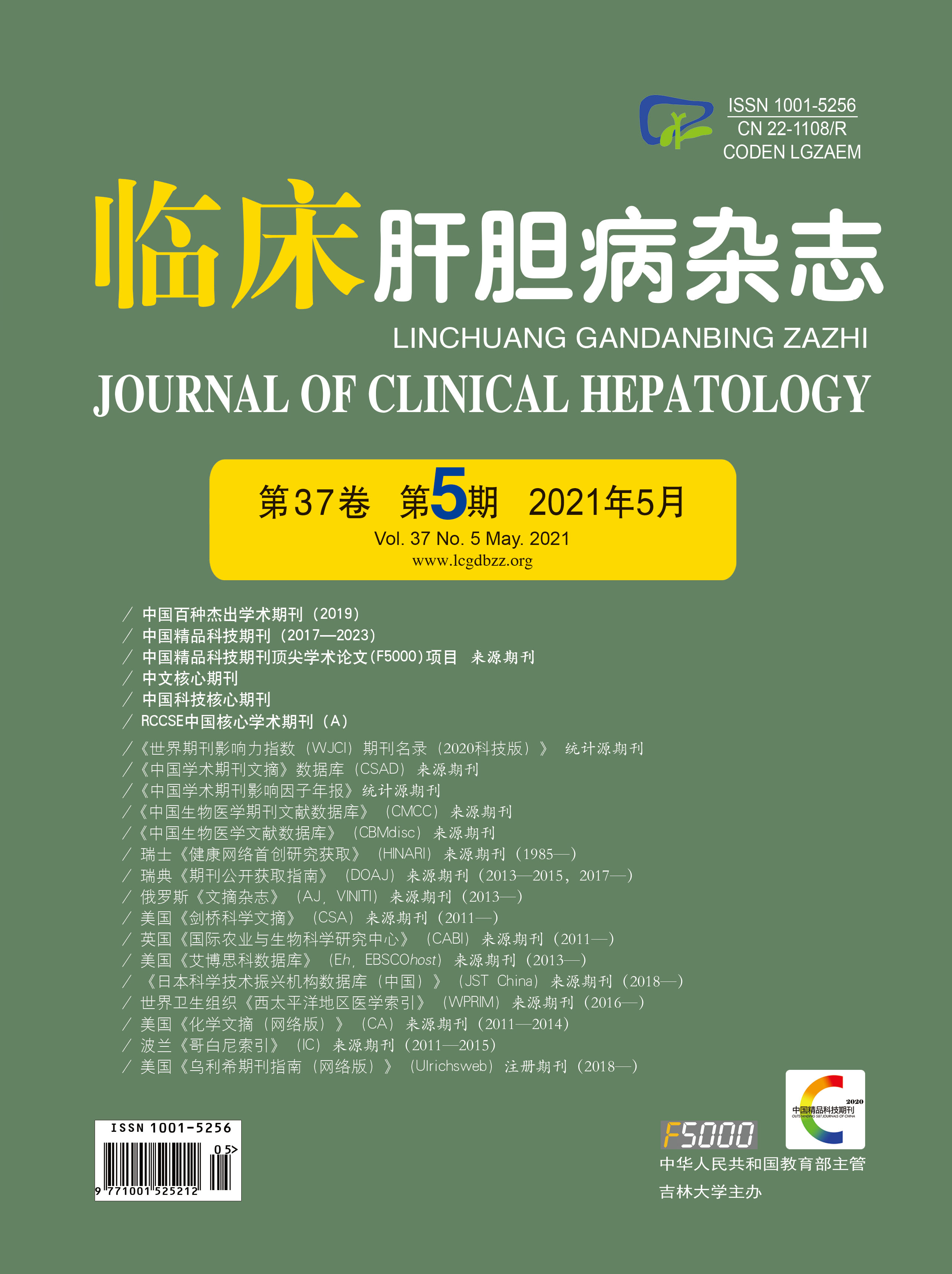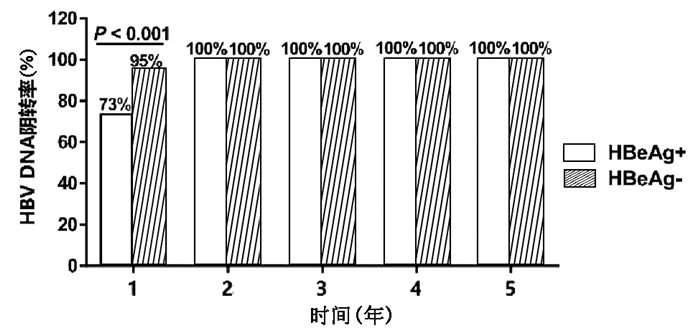| [1] |
Chinese Society of Infectious Diseases, Chinese Medical Association; Chinese Society of Hepatology, Chinese Medical Association. Guidelines for the prevention and treatment of chronic hepatitis B (version 2019)[J]. J Clin Hepatol, 2019, 35(12): 2648-2669. DOI: 10.3969/j.issn.1001-5256.2019.12.007. |
| [2] |
ZHAO Y, LI Y, QI L, et al. Antiviral curative effects of tenofovir and entecavir in treatment of aged patients with chronic hepatitis B and their regulation on inflammation factors[J]. J Jilin Univ(Med Edit), 2019, 45(1): 117-122. DOI: 10.13481/j.1671-587x.20190122. |
| [3] |
LIN L, LIU JY, DENG H, et al. Influencing factors of partial virological response to entecavir monotherapy of patients with chronic hepatitis B[J/CD]. Chin J Liver Dis(Electronic Edition), 2019, 11(4): 81-84. DOI: 10.3969/j.issn.1674-7380.2019.04.013. |
| [4] |
XU Y, ZHANG YG, WANG X, et al. Long-term antiviral efficacy of entecavir and liver histology improvement in Chinese patients with hepatitis B virus-related cirrhosis[J]. World J Gastroenterol, 2015, 21(25): 7869-7876. DOI: 10.3748/wjg.v21.i25.7869. |
| [5] |
SETO WK, WONG DK, FUNG J, et al. Reduction of hepatitis B surface antigen levels and hepatitis B surface antigen seroclearance in chronic hepatitis B patients receiving 10 years of nucleoside analogue therapy[J]. Hepatology, 2013, 58(3): 923-931. DOI: 10.1002/hep.26376. |
| [6] |
FAN XX, CUI FM, WANG FS, et al. Analysis of the characteristics and influencing factors of HBsAg change in chronic hepatitis B patients treated with NAs[J]. Acta Acad Med Bengbu, 2019, 44(5): 582-584, 589. DOI: 10.13898/j.cnki.issn.1000-2200.2019.05.005. |
| [7] |
XI HL, LI MR, BAO Y, et al. Antiviral dynamic change of HBV DNA and HBsAg and significance of quarterly and annual quantitative measurements over 5 years follow up of chronic hepatitis B patient[J]. Chin J Hepatol, 2013, 21(11): 821-824. DOI: 10.3760/cma.j.issn.1007-3418.2013.11.006. |
| [8] |
CHU CJ, HUSSAIN M, LOK AS. Quantitative serum HBV DNA levels during different stages of chronic hepatitis B infection[J]. Hepatology, 2002, 36(6): 1408-1415. DOI: 10.1053/jhep.2002.36949. |
| [9] |
HSU WF, CHEN CF, LAI HC, et al. Trajectories of serum hepatitis B surface antigen kinetics in patients with chronic hepatitis B receiving long-term nucleos(t)ide analogue therapy[J]. Liver Int, 2018, 38(4): 627-635. DOI: 10.1111/liv.13564. |
| [10] |
European Association for the Study of the Liver. EASL 2017 Clinical Practice Guidelines on the management of hepatitis B virus infection[J]. J Hepatol, 2017, 67(2): 370-398. DOI: 10.1016/j.jhep.2017.03.021. |
| [11] |
TAN L, WU T, LV Y, et al. HBsAg levels normalized to the same hepatic parenchyma cell volume is correlated with pathological progression but not HBeAg status[J]. J Sun Yat-Sen Univ(Medical Sciences), 2019, 40(5): 747-753. DOI: 10.13471/j.cnki.j.sun.yat-sen.univ(med.sci).2019.0104. |
| [12] |
CHEN CH, LU SN, HUNG CH, et al. The role of hepatitis B surface antigen quantification in predicting HBsAg loss and HBV relapse after discontinuation of lamivudine treatment[J]. J Hepatol, 2014, 61(3): 515-522. DOI: 10.1016/j.jhep.2014.04.029. |
| [13] |
SETO WK, LIU K, WONG DK, et al. Patterns of hepatitis B surface antigen decline and HBV DNA suppression in Asian treatment-experienced chronic hepatitis B patients after three years of tenofovir treatment[J]. J Hepatol, 2013, 59(4): 709-716. DOI: 10.1016/j.jhep.2013.06.007. |
| [14] |
CHEN JL, YUAN ZH. Influence of interferon and nucleos(t)ide analogues on HBV cccDNA and functional cure of chronic hepatitis B[J]. J Clin Hepatol, 2019, 35(6): 1181-1187. DOI: 10.3969/j.issn.1001-5256.2019.06.002. |
| [15] |
Chinese Medical Association, Chinese Society of Infectious Disease, Chinese Society of Hepatology, Chinese Medical Association. The expert consensus on clinical cure (functional cure) of chronic hepatitis B[J]. J Clin Hepatol, 2019, 35(8): 1693-1701. DOI: 10.3969/j.issn.1001-5256.2019.08.008. |
| [16] |
ZHOU YQ, LI C, YIN FM, et al. Change in HBsAg quantification after HBV DNA negative conversion in chronic hepatitis B patients treated with nucleos(t)ide analogues[J]. J Clin Hepatol, 2019, 35(5): 977-981. DOI: 10.3969/j.issn.1001-5256.2019.05.009. |








 DownLoad:
DownLoad:
